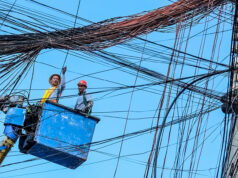Pandemic seen to test digital banks’ strength
ONLINE BANKS in Asia-Pacific will be tested by the pandemic amid higher credit costs and low interest rates, S&P Global Ratings said in a report, but long-term prospects remain bright as the region remains underbanked and with cheap, basic banking products still in high demand.
“Some virtual-only banks that relied on high deposit rates to attract customers are finding this model difficult to sustain given the prevailing ultra-low interest rates. In the absence of a meaningful core value proposition, we wonder how sticky deposits will be if above-market deposit rates are not maintained,” S&P said in a note on Wednesday.
The global debt watcher said the pandemic disrupted what was shaping up to be a “moment of glory” for virtual banks. Now, these less established institutions that are seen to be “often more vulnerable” have to face an economic crisis and go against seasoned brick-and-mortar players.
In the Philippines, the Bangko Sentral ng Pilipinas (BSP) in December unveiled a framework for digital banks that sets them apart from other lender types such as universal, thrift, commercial, or Islamic banks. The central bank will grant up to five licenses until 2022.
Newly launched digital banks in the country have been offering higher deposit rates of around 3% to 4% a year versus traditional lenders’ rates of just below 1% per annum. The central bank’s key policy rate is at 2%, while the deposit rate is at 1.5%.
As the pandemic lingers, S&P said virtual banks tied to large conglomerates have better chances of flourishing despite the crisis as they can have “strong financial investment power and focus on client experience.”
“While not a significant issue so far, risk management issues may affect small or recently established virtual banks and could trigger a flight to quality favoring traditional banks,” S&P said.
New digital banks also have to compete with traditional lenders that have introduced more online offerings and strengthened their digital capacities amid the pandemic.
“The traditional banks retain their size and significant scale advantages. They have more money to spend on technology, and can spread such costs over a significantly larger customer base,” the debt watcher noted.
Still, the outlook for digital banks remains bright as they offer cheap financial services and products that will be attractive to cash-strapped consumers due to the economic downturn.
Online lenders can also reach the unbanked population easier as access to high speed internet grows and with smartphone usage remaining high.
“The pandemic has revealed an essential need for credit for all during crisis periods. For many millions of people, virtual banks may be the solution,” S&P said.
About 51.2 million of Filipino adults remain unbanked, putting the country’s banking penetration rate at just 29% as of 2019. Lack of money was cited by Filipinos as the biggest hindrance to opening an account. — L.W.T. Noble



